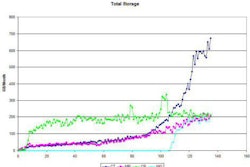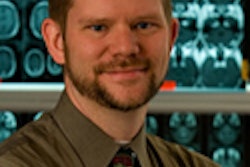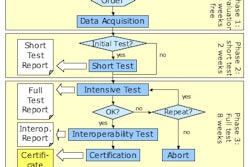At Shields Health Care Group in Quincy, MA, we faced a multifaceted challenge. We wanted to achieve a completely paperless environment, drive report turnaround to less than 20 hours for all exams, and position ourselves for the next generation of multimedia radiology reporting.
In order to complete this mission, the first step was to upgrade the speech recognition technology that was integrated with our RIS and PACS. Through the evaluation process, we concluded that an upgrade to our existing system would not position us for the future, and the decision was made to replace the voice recognition system that had been deployed at Shields nearly a decade ago.
Our first speech recognition system worked well during the early years. However, it failed to keep up with important technological advancements with speech engine technology, and even new releases to the Microsoft Windows operating system. Ultimately, a system that had delivered results initially became unstable. Poor performance and unacceptable accuracy rates resulted in many of our 120 radiologists across 24 locations being soured on the technology as a whole.
In order to make speech recognition work the second time around, we developed a decision matrix that prioritized and weighted specific criteria. In addition to integration capabilities with our existing technologies, we prioritized ease-of-use, accuracy, speed, efficiency, and reliability. Perhaps more important, we focused on partnership attributes, such as commitment to product development, release road maps, next-generation speech technologies, and alignment to what a radiology report should be.
It was imperative that we partner with a technology provider that was willing to discuss ideas about how to improve the reporting process and the report itself.
An additional aspect of our selection process was to test the technology in our setting. We brought in three systems for radiologists to evaluate based on workflow, accuracy, integration, speed, and innovation. A comparative cost-benefit analysis was reviewed after a pilot stage, after which we selected our speech recognition system.
Preparing to go live
As voice recognition technology veterans with a new network of system users, we tapped into the existing client base of other organizations for best practices, shortcuts, and even a few interesting macros. Combined with support from our speech recognition vendor, we were able to jumpstart our deployment to execute our goal of eliminating our radiologists' frustrations with editing reports caused by recognition errors with the old system.
First, we eliminated bar coding and other laborious tasks in order to establish a paperless environment. Second, we established interfaces between our speech recognition application and our PACS, as well as with our homegrown RIS. It was important to us to roll out the new speech recognition technology rapidly and to achieve full integration so that our systems were not operating as disconnected silos.
Go-Time
The full rollout period took about two months because of the number of imaging centers in our network. We were able to deploy the system to a large number of physicians across multiple groups without delays and within our timeline goals.
Because our radiologists were already well versed in speech recognition, they were easily able to learn a new system. On average, the recognition accuracy improvements compared to our prior system range from 20% to 25%. We have since achieved 100% self-editing across our radiology team and a reduction of 4 to 10 hours of report turnaround time across our facilities. Now, report turnaround time rarely exceeds 20 hours.
The best result is knowing that patients are treated more quickly, because physicians are provided with accurate reports to make informed patient care decisions.
From an administrative perspective, the module is organized in such a way as to be easily accessible and navigable. Our administrative team can access all they need through a single window. Manipulating data is no longer done from the backend on an SQL database level. Our team has also noticed that the technology has a much "lighter footprint" on the Shields network, freeing up additional bandwidth that was once required to support our previous speech recognition system.
A competitive tool
Most industry analysts would agree that the outpatient imaging market is ever-changing and extremely competitive. Although it is questionable whether it will continue, the growth rate of new imaging centers throughout the past five years has nearly reached 50%. In this environment, we know we need to excel in all aspects of our business in order to remain ahead of the competition.
Our patient care, service, and quality, combined with the accuracy of our reporting, is where we compete. By having a speech recognition technology that our radiologists can rely on, we are operating with a competitive advantage. Having the report available immediately after the radiologist dictates further separates us from the field.
By Patricia Whelan
AuntMinnie.com contributing writer
August 10, 2007
Patricia Whelan is chief information officer (CIO) of Shields Health Care Group, an independent provider of MRI services in New England.
Related ReadingKeys to a successful voice recognition implementation, July 12, 2007
ARRS study: Gender differences affect speech recognition accuracy, May 8, 2007
Speech recognition cuts report turnaround times, May 4, 2007
RIS-SR-PACS combo speeds radiology reporting, April 17, 2007
Speech recognition technology shows double-digit error rate, November 30, 2006
Copyright © 2007 Shields Health Care Group



















